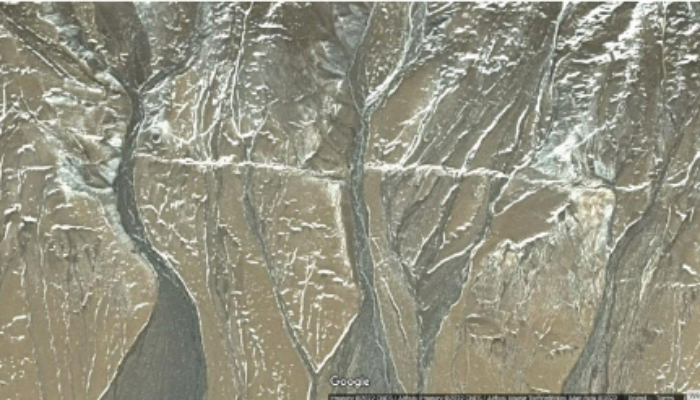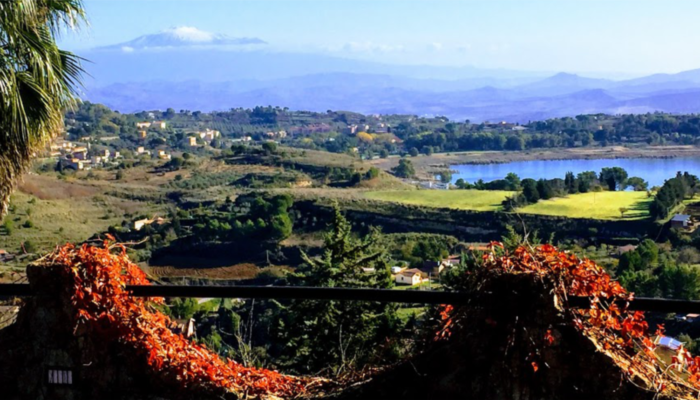This guest post was contributed by Afroz Shah who is an Assistant Professor of Structural Geology at the Department of Geosciences, Universiti of Brunei Darussalam (UBD). He has completed Ph.D at James Cook University, Australia in 2010, post-doctorate at Earth Observatory of Singapore in 2013 and joined the first academic job as a Senior Lecture of Structural Geology at Curtin Sarawak, Miri, Mala ...[Read More]
TS Must-Read – Cowie (1998) A healing-reloading feedback control on the growth rate of seismogenic faults
This study provides a simple numerical model of fault rupture that describes the development of fault systems from the initial nucleation of numerous small faults to the localisation of deformation into few major faults. The model presented is based on two main considerations: first, earthquakes cause stress changes that can either advance or delay failure on neighbouring faults. Second, for failu ...[Read More]
Geomythology. The Sicilian Trilogy – Part I: Persephone on the endorheic Pergusa lake
If, in 2022, you still think that seasons depend on the Earth’s rotation around its tilted axis and around the Sun… you are surely right. However, in ancient times, the Greeks, and the Romans afterwards, thought it was due to an agreement between Zeus and Hades, to save Persephone from the Underworld. The sick love of Gods Persephone, daughter of Demeter, the Goddess of harvest and agricultu ...[Read More]
TS Must Read paper – Foreland Basin Systems, DeCelles & Giles (1996)
Foreland Basin Systems, by DeCelles and Giles (1996), expands the concept of foreland basin into the more comprehensive and integrative concept of foreland basin systems. Foreland basin systems can be defined, as per this TS must-read paper, as compressional regions where various tectonic forces lead to flexural responses of a variable wavelength, which may in turn lead to up to four areas with po ...[Read More]
TS Must-Read – Caine et al., 1996 Fault zone architecture and permeability structure
Caine et. al. (1996) is a cornerstone paper which describes, compares and quantifies brittle fault zones and their permeability (fluid flow) properties from observations. Doing so, the paper initiates the accumulation of information on the permeability of brittle fault zones described previously (Randolph and Johnson 1989; Scholz 2019; Byerlee 1993). The study begins by defining fault zones as com ...[Read More]
TS Must-Read – Cowie and Scholz (1992) – Physical explanation for the displacement-length relationship of faults using a post-yield fracture mechanics model
The Must-Read paper by Cowie and Scholz (1992) uses theory from fracture mechanics to explain fault growth and fault displacement profiles. The article initially points out the weaknesses in previous work, specifically highlighting how the abrupt termination of displacement profiles at fault tips would imply an infinite stress in the surrounding material. The paper then introduces a physical model ...[Read More]
TS Must-Read – Fossen and Tikoff (1993): The deformation matrix for simultaneous simple shearing, pure shearing and volume change, and its application to transpression-transtension tectonics
With their milestone article in Journal of Structural Geology (Fossen and Tikoff, 1993) and its companion article in Tectonophysics (Tikoff and Fossen, 1993), the authors marked a step forward for the quantification of strain in the deep crust. These articles popularized a new approach, the deformation matrix. An easy solution to quantify strain in finite geological systems is to find continuous ...[Read More]
TS Must-read – Buck (1991): Modes of continental lithospheric extension
Buck (1991) aims at solving the intense ‘70s and ‘80s tectonic debate concerning the way extension is accommodated in continental regions (see our previous blog posts here and here). His article explores the physical conditions that can lead to the three end-member modes of lithospheric extension in continents: core complex mode, wide rift mode and narrow rift mode. The three extensional modes th ...[Read More]
The power and pitfalls of compliments
Part of a good workplace vibe is good contact between colleagues, as well as good contact between you and your supervisor – or between you and your supervisee. A potentially complex ingredient is the power of compliments. Compliments, per definition, are meant well. However, they can backfire enormously, when they are not received in the spirit in which they are meant. Additionally, part of being ...[Read More]
Geomythology. Hawaii islands and the journey of Pele

Hotspot Theory How would you explain a series of volcanoes in the middle of the ocean such as the Hawaii, the Midway or the Canary islands? J.T. Wilson, in 1963, suggested they are formed by relatively small, long-lasting, and exceptionally hot regions of magma located beneath the Earth crust, so-called “hotspots” (Wilson, 1963). Firstly, he applied this idea to the Hawaiian Islands, but the conce ...[Read More]




